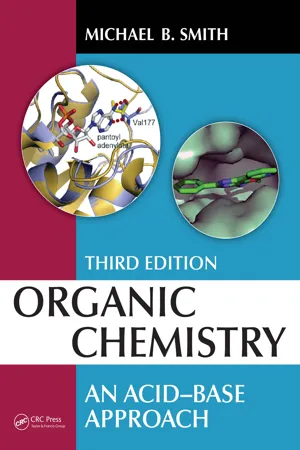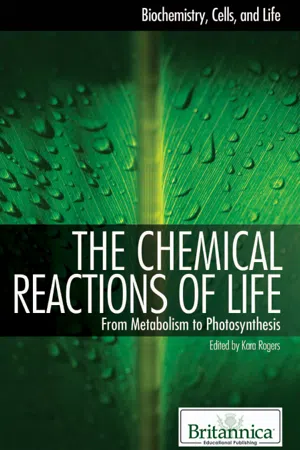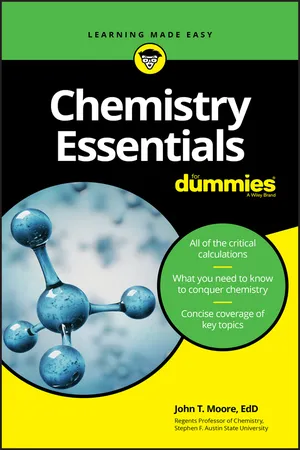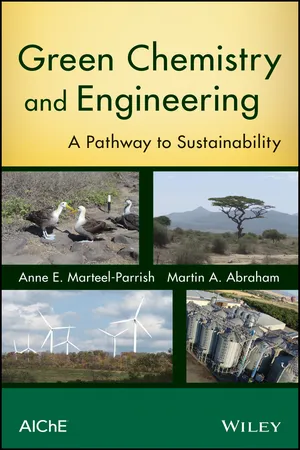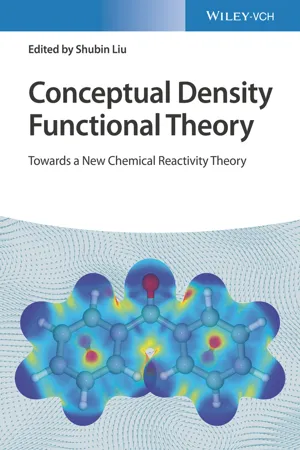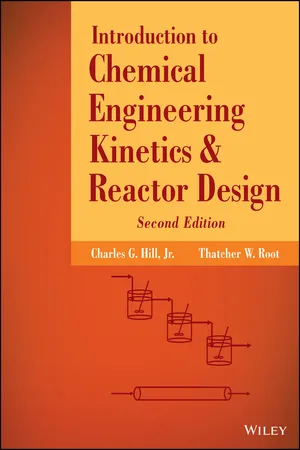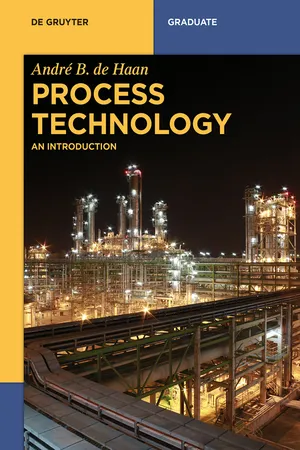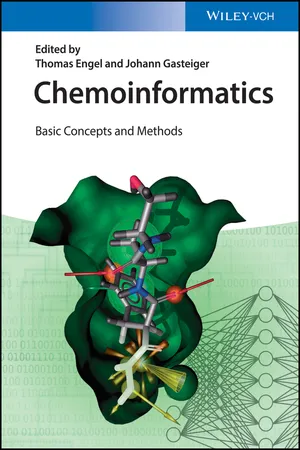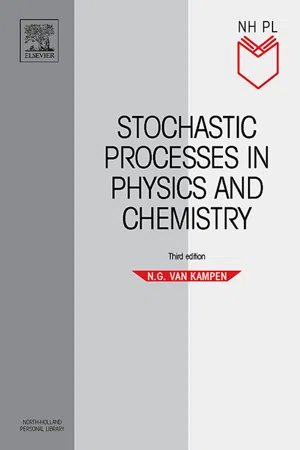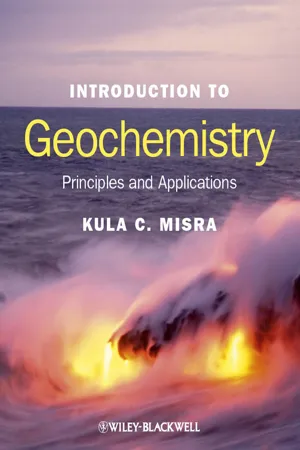Chemistry
Chemical Reactions
Chemical reactions involve the transformation of substances into new compounds through the breaking and forming of chemical bonds. This process often involves the release or absorption of energy. Chemical reactions are described by chemical equations, which show the reactants and products involved, and are fundamental to understanding the behavior of matter in the universe.
Written by Perlego with AI-assistance
Related key terms
12 Key excerpts on "Chemical Reactions"
- eBook - ePub
Organic Chemistry
An Acid-Base Approach
- Michael B. Smith(Author)
- 2022(Publication Date)
- CRC Press(Publisher)
7 Chemical Reactions, Bond Energy, and Kinetics DOI: 10.1201/9781003174929-7 The video clips for this chapter are available at: https://routledgetextbooks.com/textbooks/9780367768706/chapter-7.php A chemical reaction transforms one molecule into another molecule. Understanding key characteristics of Chemical Reactions helps to understand how reactions work, why they work, what energy characteristics drive a reaction, and if there is an intermediate. It must also be known if the reaction proceeds in one step or several steps to the final isolated product. To begin this chapter, you should know the following points: The structure and nomenclature of functional groups (Sections 5.1, 5.3, 5.5, and 5.6). The chemical bond in general, and the polarized covalent bond in particular (Sections 3.3, 3.5, and 3.8). An understanding of the factors that influence making and breaking bonds (Section 3.7). The fundamentals of acid-base equilibria and p K a (Sections 2.1–2.3 and 6.1–6.3). 7.1 A Chemical Reaction Formally, a chemical reaction is a process that converts the molecular or ionic structure of one substance to another substance. When Chemical Reactions occur, the atoms are rearranged. A reaction is accompanied by an energy change as new products are generated. The substance (or substances) initially involved in a chemical reaction is (are) called reactants and reagents. Chemical Reactions usually yield one or more products, with a structure and properties different from the reactants. Reactions may go to completion or proceed in the forward or reverse direction until they reach equilibrium. Many reactions proceed in the forward direction to give an isolated product once the reaction begins and require no further input of energy to go forward. These reactions are said to be spontaneous. Some reactions require an input of energy to go forward even after the reaction has begun - eBook - ePub
The Chemical Reactions of Life
From Metabolism to Photosynthesis
- Britannica Educational Publishing, Kara Rogers(Authors)
- 2010(Publication Date)
- Britannica Educational Publishing(Publisher)
CHAPTER 2Classifying and Studying Chemical ReactionsC hemical reactions are an integral part of life and technology. They determine the appearance and behaviour of organisms and the processes by which foods, plastics, and other products are manufactured. Thus, the ongoing study of reactions is fundamental to both the development of new technologies and the further elucidation of the complicated processes that support living systems.Knowledge of the basic properties and mechanisms of Chemical Reactions also influences the way in which chemists group and categorize reactions. Reactions can be broadly classified as syntheses, decompositions, or rearrangements, or they can be additions, eliminations, or substitutions. Examples include oxidation-reduction, polymerization, ionization, combustion (burning), hydrolysis, and acid-base reactions.CLASSIFYING Chemical Reactions
Chemists classify reactions in a number of ways: (a) by the type of product, (b) by the types of reactants, (c) by reaction outcome, and (d) by reaction mechanism. Often, a given reaction can be placed in two or even three categories.CLASSIFICATION BY TYPE OF PRODUCTThe final forms taken by reactants at the end of a chemical reaction are defined as the reaction products. Different reaction pathways result in the formation of different products. Major groups of Chemical Reactions, categorized on the basis of product type, include gas-forming reactions and precipitation reactions.GAS -FORMING REACTIONSMany reactions produce a gas such as carbon dioxide, hydrogen sulfide (H2 S), ammonia (NH3 ), or sulfur dioxide (SO2 ). An example of a gas-forming reaction is that which occurs when a metal carbonate such as calcium carbonate (CaCO3 - eBook - ePub
- John T. Moore(Author)
- 2019(Publication Date)
- For Dummies(Publisher)
Chapter 7Chemical Reactions
IN THIS CHAPTERDifferentiating between reactants and productsFinding out how reactions occurTaking a look at types of reactionsUnderstanding how to balance reactionsFiguring out chemical equilibriumChecking out speeds of reactionIn a chemical reaction, substances (elements and/or compounds) are changed into other substances (compounds and/or elements). You can’t change one element into another element in a chemical reaction — that happens in nuclear reactions, as I describe in Chapter 4 .A number of clues show that a chemical reaction has taken place — something new is visibly produced, a gas is created, heat is given off or taken in, and so on.In this chapter, I discuss Chemical Reactions — how they occur and how to write a balanced chemical equation. I also tell you about chemical equilibrium and explain why chemists often can’t get the amount of product out of a reaction that they thought they could. And finally, I discuss the speed of reaction.Reactants and Products: Reading Chemical Equations
You create a new substance with Chemical Reactions. The chemical substances that are eventually changed are called the reactants, and the new substances that are formed are called the products .Chemical equations show the reactants and products, as well as other factors such as energy changes, catalysts, and so on. With these equations, you use an arrow to indicate that a chemical reaction has taken place. Beneath or above this arrow people sometimes indicate that a specific catalyst is used, or acidic conditions or heat is applied, and so on. In general terms, a chemical reaction follows this format:For example, take a look at the reaction that occurs when you light your natural gas range in order to fry your breakfast eggs. Methane (natural gas) reacts with the oxygen in the atmosphere to produce carbon dioxide and water vapor. (If your burner isn’t properly adjusted to give that nice blue flame, you may also get a significant amount of carbon monoxide along with carbon dioxide.) You write the chemical equation that represents this reaction like this: - eBook - ePub
Green Chemistry and Engineering
A Pathway to Sustainability
- Anne E. Marteel-Parrish, Martin A. Abraham(Authors)
- 2013(Publication Date)
- Wiley-AIChE(Publisher)
5
Chemical Reactions
5.1 DEFINITION OF Chemical Reactions AND BALANCING OF CHEMICAL EQUATIONS
The concept of molecules and compounds was introduced in Chapter 4. Chemists and chemical engineers manipulate compounds to form new materials that achieve a specific goal or purpose. It is of crucial importance that compounds be mixed in the proper ratios so that the desired reaction can be achieved. The relationship between the compound and its atoms is displayed through the molecular formula, and the chemist uses this information to develop a balanced chemical equation that can properly describe the breaking and forming of bonds in Chemical Reactions.As mentioned in Chapter 4, a chemical reaction is “a process in which substances (reactants) change into other substances (products) by rearrangement, combination, or separation of atoms.” A chemical reaction is represented by a chemical equation with two sides: one for the reactants and one for the products.The arrow means “forms,” “yields,” “changes to,” or “is/are converted into.”The law of conservation of matter, “matter is neither destroyed nor created,” applies to all atoms in a chemical reaction. As a result, a balanced chemical reaction requires that there must be an equivalent number of atoms of each type on both sides of the equation. Consider the reaction between hydrogen and oxygen to form water, as shown in Equation 5.1 .(5.1 )In Equation 5.1 , we have placed a letter in front of each molecule to represent the stoichiometric coefficient, a multiplying number assigned to the species in a chemical equation in order to balance the equation. Now the challenge is to determine what number each letter in Equation 5.1 represents.Let’s suppose we were producing one molecule of water. In this case, there would be one oxygen atom on the right-hand side of the equation, and to have a balanced chemical equation would require that we have one oxygen atom on the left side. But diatomic oxygen is shown on the left side, and it is not possible to have fractional numbers of molecules. So the smallest number of oxygen molecules on the left side would be one. Based on this analysis, let’s tentatively state that m - eBook - ePub
Conceptual Density Functional Theory
Towards a New Chemical Reactivity Theory
- Shubin Liu(Author)
- 2022(Publication Date)
- Wiley-VCH(Publisher)
23 On the Mechanisms of Chemical Reactions Soledad Gutiérrez‐Oliva1 , Angie Carolay Forero‐Girón1 , Nery Villegas‐Escobar2 , and Alejandro Toro‐Labbé1 1 Universidad Católica de Chile, Facultad de Química y de Farmacia, Laboratorio de Química Teórica Computacional (QTC), Santiago, Chile 2 Universidad Bernardo O'Higgins, Centro Integrativo de Biología y Química Aplicada (CIBQA), Santiago, Chile23.1 Introduction
One can picture a chemical reaction as a sequence of chemical events that are structural and electronic changes taking place along a reaction coordinate to produce a chemical transformation. These chemical events are basically bond‐forming and bond‐breaking processes that are main actions, although not the only ones, necessary to produce the structural and electronic changes that achieve a chemical reaction. For example, a simple substitution reaction asinvolves a weak initial attractive interaction that allows the approach of the reactants A and BX to initiate the reaction. This is followed by the breaking of the B–X bond and the formation of the A–B bond; depending on the reaction, these two events may, or may not, take place simultaneously. The reaction is achieved when the products AB and X are formed and interacting through non‐covalent interactions. It is possible to define a hierarchy of chemical events that can be distinguished empirically, but also in terms of the amount of energy they involve and, in most cases, for the position along the reaction coordinate in which they take place. Bond‐breaking and bond‐forming processes are primary events, bond weakening and strengthening are secondary events, and non‐covalent interactions can be considered as tertiary events. These chemical events shows up at different degrees of progress of the reaction, as shown in Figure 23.1 - eBook - ePub
Foundations for Teaching Chemistry
Chemical Knowledge for Teaching
- Keith S. Taber(Author)
- 2019(Publication Date)
- Routledge(Publisher)
As teachers , however, we are in the process of inducing novices into our discourse community (the chemist’s way of thinking and talking), and we need to be aware that if we say that salts can be soluble or insoluble, that some dissolve in water and some do not, then our students may treat this as an absolute distinction rather than carrying hidden qualifications.Classes of substance and classes of reactionsThe chemical literature reports a vast number of Chemical Reactions. There are clearly too many reactions that occur naturally, or have been set up in laboratories, for any one person – whether chemist, science teacher, or student – to be familiar with them all. As a science, chemistry does not simply seek to catalogue and describe all these myriad reactions but rather to find patterns that can help us organise this knowledge (see Chapter 2 ).Chemists refer to ‘types of reactions’ as part of a strategy to organise vast amounts of data. Classes of reaction do not generally refer to reactions of specific substances but to classes of substance. So the wide range of different chemical substances are considered under groups (e.g., metals, acids, oxidising agents), and ‘types of reactions’ tends to refer to reactions between classes of substance, such as metals with acids. In organic chemistry (see Chapter 12 ), there are many groups of substances classified according to ‘functional groups’ – for example, a compound where the molecule includes a hydroxyl (-OH) group attached to a carbon centre otherwise only directly bonded to H or other C centres is called an alcohol.Chemical concepts are the products of human imagination – conjectures about how to best make sense of patterns observed in chemical phenomena (see Chapter 6 - Mark Kernion, Joseph A. Mascetta(Authors)
- 2021(Publication Date)
- Barrons Educational Services(Publisher)
PART VChemical Reactions
Passage contains an image
8 Chemical Reactions AND THERMOCHEMISTRY
WHAT YOU WILL LEARN
Upon completing this chapter, you will be able to:•Identify the driving force for these four major types of Chemical Reactions and write balanced equations for each: combination (or synthesis), decomposition (or analysis), single replacement, and double replacement•Explain hydrolysis using a balanced equation •Identify and explain graphically enthalpy changes in exothermic and endothermic reactions •Use Hess’s Law to show the additivity of heats of reactions •Calculate enthalpy from bond energies
The many kinds of reactions you may encounter can be placed in four basic categories: combination, decomposition, single replacement, and double replacement.Types of ReactionsThe first type, combination, can also be called synthesis. This means the formation of a compound from the union of its elements. Some examples of this type areThe second type of reaction, decomposition, can also be referred to as analysis. This means the breakdown of a compound to release its components as individual elements or other compounds. Some examples of this type areThe third type of reaction is called single replacement or single displacement. This type can best be shown by examples in which one substance is displacing another. Some examples areThe last type of reaction is called double replacement or double displacement because there is an actual exchange of “partners” to form new compounds. Some examples of this arePredicting ReactionsOne of the most important topics of chemistry deals with the reasons why reactions take place. Taking each of the above types of reactions, let us see how a prediction can be made concerning how the reaction gets the driving force to make it occur.COMBINATION (SYNTHESIS)The best source of information in predicting a chemical combination is the heat of formation table. A heat of formation table gives the number of calories evolved or absorbed when a mole (gram-formula mass) of the compound in question is formed by the direct union of its elements. In this book, a positive number indicates that heat is absorbed, and a negative number that heat is evolved. It makes some difference whether the compounds formed are in the solid, liquid, or gaseous state. Unless otherwise indicated (g = gas, ℓ = liquid), the compounds are in the solid state. The values given are in kilojoules; 4.18 joules is the amount of heat needed to raise the temperature of 1 g of water one degree on the Kelvin scale. The symbol ΔH- Charles G. Hill, Thatcher W. Root(Authors)
- 2014(Publication Date)
- Wiley(Publisher)
Chapter 5 Chemical Systems Involving Multiple Reactions5.0 Introduction
The chemical compositions of many reacting systems can be expressed in terms of a single reaction progress variable. However, a chemical engineer must often consider systems that cannot be adequately described in terms of a single extent of reaction. In this chapter we are concerned with the development of the mathematical relationships that govern the behavior of such systems. We treat reversible reactions, competitive (parallel) reactions, and consecutive reactions, first in terms of the mathematical relations that govern the behavior of such systems and then in terms of the techniques that may be used to relate the kinetic parameters of the system to the phenomena observed in the laboratory.5.1 Reversible Reactions
Reversible reactions are those in which appreciable quantities of all reactant and product species coexist at equilibrium. For these reactions the rate that is observed in the laboratory is a reflection of the interaction between the rate at which reactant species are transformed into product molecules and the rate of the reverse transformation. The ultimate composition of the systems in which such reactions occur is dictated not by exhaustion of the limiting reagent but by the constraints imposed by the thermodynamics of the reaction.5.1.1 Mathematical Characterization of Simple Reversible Reaction Systems
The time dependence of the composition of a system in which a reversible reaction is occurring is governed by the mathematical forms of the rate expressions for the forward and reverse reactions, the net rate of reaction being the difference between these two quantities:5.1.1In this section we discuss the mathematical forms of the integrated rate expression for a few simple combinations of the component rate expressions. The discussion is limited to reactions that occur isothermally in constant density systems, because this simplifies the mathematics and permits one to focus on the basic principles involved. Again we place a “V” to the right of certain equation numbers to emphasize that such equations are not general but are restricted to constant volume batch reactors. The use of the extent per unit volume in a constant volume system (- eBook - ePub
- André B. de Haan(Author)
- 2015(Publication Date)
- De Gruyter(Publisher)
chemical reaction engineers.3.2 Classification of reactions
There are many ways of classifying Chemical Reactions. In chemical reaction engineering probably the most useful scheme is a breakdown according to the number and types of phases involved, the big division being between homogeneous and heterogeneous systems. A reaction is homogeneous if it takes place in one phase alone. A reaction is heterogeneous if it requires the presence of at least two phases to proceed at the rate that it does. It does not matter whether the reaction takes place in one, two, or more phases, or at an interface, or whether the reactants and products are distributed among the phases or are all contained within a single phase. All that counts is that at least two phases are necessary for the reaction to proceed as it does.Sometimes this classification is not as clear cut as with the large class of biological reactions, the enzyme substrate reactions. Since enzymes themselves are highly complicated proteins of large molecular weight and colloidal size, enzyme-containing solutions represent a gray region between homogeneous and heterogeneous systems. Another example for which the distinction is not sharp is a very rapid chemical reaction, such as a burning gas flame, where large nonhomogeneity in composition and temperature may exist.Cutting across this classification is the catalytic reaction whose rate is altered by materials which are neither reactants nor products. These foreign materials, called catalysts, need not be present in large amounts. Catalysts act somehow as gobetweens, either hindering or accelerating the reaction process while being modified relatively slowly if at all.Tab. 3.1 - eBook - ePub
Chemoinformatics
Basic Concepts and Methods
- Thomas Engel, Johann Gasteiger(Authors)
- 2018(Publication Date)
- Wiley-VCH(Publisher)
Section 2.4.1 ).To determine the concentrations at which a compound or metabolite is produced, differential equations have to be solved. Nowadays, for biological systems methods such as flux balance analysis 48 ] or metabolic flux analysis 49 ] are used.Essentials- Reactions are only insufficiently represented by the structure of their starting materials and products.
- The representation of a chemical reaction should include the connection tables of all participating species (starting materials, reagents, solvent, catalysts, products) as well as information on reaction conditions (temperature, concentration, time, etc.) and other observations (yield).
- Knowledge acquisition on chemical reactivity can greatly benefit if more detailed information such as reaction rates, other kinetic data, or heats of reaction are available.
- Many queries in reaction databases require the specification of the reaction center and the bonds broken and made in a reaction, in essence, to specify how electrons are shifted during a reaction.
- In this sense, the representation of Chemical Reactions should consider some essential features of a reaction mechanism.
- Further insight into the driving forces of Chemical Reactions can be gained by considering essential physicochemical effects at the reaction center.
- Reaction types can automatically be derived through classification of reaction instances.
- Reaction classification is an essential step in knowledge acquisition from a reaction database.
- There are two fundamental approaches to automatic reaction classification: model‐driven and data‐driven methods.
- The stereochemistry of reactions can be treated by permutation group theory.
- The analysis of reaction networks, particularly those observed in biochemical pathways, provides special challenges.
- eBook - ePub
- N.G. Van Kampen(Author)
- 2011(Publication Date)
- North Holland(Publisher)
Chapter VIIChemical Reactions
Chemical Reactions constitute an ample field for applications of stochastic methods, and have already provided us with several examples. This chapter slightly deviates from the main line in order to provide a firm basis for these applications. The last two sections deal with topics of more general interest, which, however, can best be formulated in a chemical context.1 Kinematics of Chemical Reactions
Consider a closed volume Ω containing a mixture of chemical compounds Xj (j = 1, 2, …, J ). Let n j be the number of molecules Xj . It is convenient to represent the set {n j } geometrically by a vector n in a J -dimensional “state space”. The integral values of the n j constitute a lattice. Every lattice point in the “octant” of nonnegative values corresponds to a state of the mixture and vice versa (Fig. 17 ).Fig. 17 The state space of a binary mixture.The state of the mixture changes when a chemical reaction occurs. A typical reaction is determined by a set of stoichiometric coefficients s j , r j in the form(1.1)Both sides can be written as a sum over all j when zero values of s j , r j are admitted. If for any k one has s k =r k ≠ 0 the corresponding Xk is a catalyst. If r k >s k >0 then Xk is an autocatalyst. So far the s j , r j are defined up to a common factor, but we may take for s j the actual number of molecules needed for a reactive collision. A reaction that proceeds through intermediate steps (chain reaction) then has to be written as a sequence of single-collision reactions, the intermediate products being included as separate items among the Xj . As three-body collisions are rare one meets in practice only reactions with ∑s j equal to 1 or 2; or possibly 3 if a catalyst is involved. But the following theoretical considerations are not subject to this restriction. *)Each reactive collision of type(1 .1)changes the state {n j } of the mixture into {n j +r j -s j }. In the geometrical representation this means that it changes the state vector n by adding to it a vector v with components v j =r j -s j - eBook - ePub
Introduction to Geochemistry
Principles and Applications
- Kula C. Misra(Author)
- 2012(Publication Date)
- Wiley-Blackwell(Publisher)
9 Kinetics of Chemical ReactionsLasaga (1998)…it is interesting to note that geology has always stressed the element of time as a central concept in describing the earth. In this respect, the description of time-dependent phenomena (e.g., kinetics) is even more akin to geology than thermodynamics (time independent). The study of kinetics is inherently more difficult than that of thermodynamics because time-dependent processes are path dependent.A chemical reaction may be homogeneous or heterogeneous. A homogeneous reaction occurs entirely within a single macroscopic phase (solid, liquid, or gas); a heterogeneous reaction occurs at the interface between two or more phases. For example, the dissociation of H2 CO3 acid to aqueous H+ and HCO3 − (reaction 7.36) is a homogeneous reaction, whereas the dissociation of solid calcite in water to aqueous Ca2 + and CO3 2 − (reaction 7.65) is a heterogeneous reaction.There are two fundamental questions about a homogeneous or heterogeneous chemical reaction at specified conditions: is the reaction possible and, if so, how fast is it likely to proceed? The first question – whether the reaction should occur or not – can be answered by the application of thermodynamic principles discussed in previous chapters. The answer to the second question – what would be the rate of the reaction if it is thermodynamically feasible – involves principles of chemical kinetics, which encompasses the study of rates of Chemical Reactions, the factors that affect reaction rates, and the mechanisms by which reactions occur.The most obvious example of kinetic control on Chemical Reactions is the metastable persistence of high-temperature minerals, such as olivine, and high-pressure minerals, such as diamond, in rocks exposed on the Earth’s surface (see Chapter 4). In reality, most geochemical processes such as nucleation and growth of minerals, chemical weathering, diagenesis, hydrothermal alteration, reactions at grain boundaries during metamorphism, and isotope exchange processes, are dominated by chemical kinetics.
Index pages curate the most relevant extracts from our library of academic textbooks. They’ve been created using an in-house natural language model (NLM), each adding context and meaning to key research topics.
